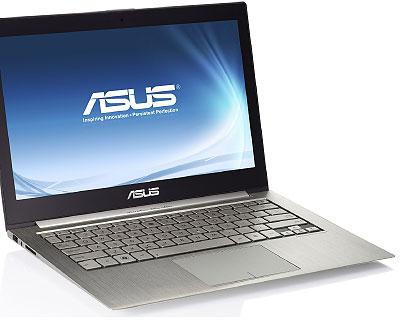The Ultrabook is a new computer segment that has been generating a lot of media attention in the last couple of months and rightly so. Coined by Intel the giant computer chip maker, the Ultrabooks is a spin on existing technology, the netbook.


The Ultrabook is a new computer segment that has been generating a lot of media attention in the last couple of months and rightly so. Coined by Intel the giant computer chip maker, the Ultrabooks is a spin on existing technology, the netbook. Ultrabooks are Intel’s vision of portable computing of the future. Launched some time in 2011, the ultrabook segment was a $300 million investment in research and development and marketing effort from Intel. Though Intel owns the Ultrabook trademark, other big names (Sony, Dell, Lenoco, Asus, HP, Samsung, Acer) in the computer business are manufacturing the ulltrabooks under license. While conceiving the Ultrabook, Intel envisioned a faster, thinner and aesthetically pleasing machine with long battery life. Physical specificationsIntel specifies, a maximum thickness of 18mm for a 13 inch or smaller ultrabook. While there is no restriction on weight, most ultrabooks weigh between 2.5 and 3.25 pounds. Technical specificationsThe first iteration of Ultrabooks are powered by Intel’s "Sandy Brideg” low voltage core I processors. The Sandy Bridge processors come in Core i3, i5 and i7 flavours, though the i5 processor is most favored for striking a middle ground in power and affordability. Sandy Bridge processors are optimized for low power usage which gives the Ultrabooks hours on a single charge. The processor is commonly paired with a 4GB or more RAM, which make for smooth operation. Most of the Ultrabooks on the market will come equipped with a 128GB or 256GB solid state drive (SSD). Unlike traditional hard disk drives, solid state drives have no moving parts which make them more reliable. Solid state drives also make for faster startup times and even faster wake times from sleep state. In some instances Ultrabooks can cold boot in less than 10 seconds and 2 – 3 seconds to wake from sleep. All Ultrabooks have no optical drives (CD-ROMs/ DVD burners). More and more computer manufactures are omitting optical drives from their notebooks and netbooks, opting for cloud storage and portable storage devices. ConnectionsUltrabooks come with a plethora of connection options. These input and output ports include, USB 2 or USB3 for faster data transfer. Other ports include, HDMI to connect to larger TV monitors or high definition TVs, VGA ports to connect to external monitors, Ethernet ports for wired network connectivity, memory card readers and WIFI for wireless connection. Input devicesUnlike their netbook siblings, Ultrabooks come with full size keyboards which make for comfortable typing, as well as track pads.DisplaysUltrabooks come in 11 inch and 13 inch varieties with resolutions of 1366X768. The resolution is not set in stone. Some manufactures are likely to upgrade their screen resolutions to distinguish their products from the competition. In the near future, Ultrabooks will have touch-screens. With Windows 8 around the corner, touch screen Ultrabooks will soon be commonplace. Some manufactures have already toyed around with hybrid touch-screen Ultrabooks with detachable keyboards. The Lenovo Ideapad Yoga, recently outed by PC giant Lenovo, is a proof of concept that touch screen Ultrabooks will be the next big thing.SoftwareUltrabooks by default run windows 7 home premium professional.Pricing and availabilityIntel proposes prices under $1000 but so far the Ultrabooks available barely make it below the $1000 mark. Prices are bound to go down in response to the laws of demand and supply.The Asus Zenbook is my favorite Ultrabook. With an all metal construction, the Zenbook looks sleek and futuristic. Starting at $999 online, you get the standard ultrabook configuration, with a Core i5 processor, 4 GB of RAM and 128 GB solid state drive.On the low end of the scale is the Acer S3 one of the cheapest ultrabooks for the budget minded buyer for $899 online. ConclusionIt’s too early to say if the Ultrabook is the future of computing. However, the Ultraboook is a very capable successor of the ageing netbook. With specifications that can match desktops and full size laptops, it’s only a matter of time until Ultrabooks go mainstream. Manufacturers are optimistic that prices will drop below the $500 mark in the near future. That will be a definite win for the end user.
www.afrogeek.tk




